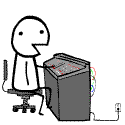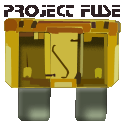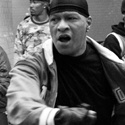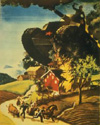|
dakana posted:I can answer 2 of these: That's what I figured. I'd probably go with the cybersync. It sounds like I should be good with a transmitter and one receiver. ConfusedUS: I have a SB-600 currently that I could use for that sort of thing for now. If I needed another one in the future it's pretty cheap to pick up a Vivatar. Thanks for your input guys.
|
|
|
|

|
| # ? May 8, 2024 09:40 |
|
dakana posted:For people looking into AlienBees, something to consider is that there is a 10% discount off of your entire order if you are a U.S. student. This applies to all students, not just photography/art majors. Calumet gives a pretty steep discount on stands, bags, etc. if you are a student (I think you have to be studying photography). Luk3 posted:With that package, how do you attach the umbrellas to the lightstand / strobe? With hotshoe setups you have an umbrella swivel that you attach the umbrella to, what is the equivalent here? There is a place to attach the umbrella on the light itself. For accessories yes you should buy from somewhere else - I have a mix of Calumet and Avenger stands that I like a lot. Triggering the best solution is Pocket Wizards but that is also the most expensive. The Vagabond is just a battery and a special inverter in a convenient package. For what you get the price is really good, I looked into just buying the parts seperately and building one but it was going to end up costing the same. Not all inverters are pure sine wave (which is what works best with strobes) so that is basically what you are paying for. ConfusedUs posted:I've got one of those five-section Bogen lightstands Strobist is always going on about and I love it. The thing is tiny, weighs next to nothing, but the legs are sturdy and you can sandbag the gently caress out of it (or, as I usually do, have my assistant hold it). I've seen these and I don't recommend them for monolights. They are fine for small flashes but monolights weigh a couple of pounds, especially once you add a modifier, and top heavy stands are bad news. You don't need solid metal ones but get a standard studio stand that's not going to blow over every time there's a breeze. It's a lot easier to carry around a bunch of stands that are moderately heavy than it is to carry light stands AND sandbags.
|
|
|
|
I had to carry bags quite a few years ago (photography internship in high school), and they're a bitch and a half. Tossing a hundred pounds of bagged stands on your back on the other hand is no problem if the bags are padded properly.
evil_bunnY fucked around with this message at 23:11 on Dec 15, 2008 |
|
|
|
evil_bunnY posted:I had to carry bags quite a few years ago (photography internship in high school), and they're a bitch and a half. Tossing a hundred pounds of bagged stands on your back on the other hand is no problem if the bags are padded properly. Speaking of which, I just scored some shady Optex tripod bag for free, and it looks like my light stand and umbrella will fit in it, so score. Plus it appears my AB400 might fit in my EX180 bag, which would be even better. The thing is, I'm going to look like a retard with all this stuff in separate bags. What do you on-location-monolight pros do? Attach bags to other bags? Get an assistant to carry some?
|
|
|
|
The larger Pelican cases have big, sturdy handles that pull out so you can roll them. I just balance the other bags against that. I almost always have an assistant to help with that kind of stuff. I would never put a bunch of poo poo on my back (or let an assistant do it), a lot of lighting stuff is heavy and that's a bad habit.. even a lot of the smaller Pelican cases have wheels so there's no reason to not just roll things when possible.
|
|
|
|
brad industry posted:The larger Pelican cases have big, sturdy handles that pull out so you can roll them. I just balance the other bags against that. I almost always have an assistant to help with that kind of stuff.
|
|
|
|
The big Pelican case in that pic I posted on the last page is a 1650 which holds 3 WL heads, I think it's about ~$100. You could probably fit 3-4 AB heads in it or the Vagabond (which has a strap so it's fairly easy to carry).
|
|
|
|
brad industry posted:The big Pelican case in that pic I posted on the last page is a 1650 which holds 3 WL heads, I think it's about ~$100. You could probably fit 3-4 AB heads in it or the Vagabond (which has a strap so it's fairly easy to carry). I clearly need to get a car. I should probably get some kind of medal for hauling my camera bag, light stand, and now AB400 on the bus. Luckily my next shoot is very close to home. Unluckily, it's in the hallway of a college, so I'll probably have all kinds of issues with light bouncing around like a motherfucker. Is it worth buying some black fabric to try to fashion a ghetto flag to put behind me?
|
|
|
|
How do people go about setting up/metering a shoot with 1 or more strobes? Do serious/professional flash photographers user TTL-networked flashes? Spot meters? Charts with distances and power settings? Eyeball, test-shot, and adjust? I've read a decent chunk of the strobist articles, but as I understand it, his is a fairly atypical approach.
|
|
|
|
I have a Sekonic L-558 meter, it has a PW built in - you set it to flash mode with the correct channel and then point the dome ball thingie at whatever light you want to meter and do an incident (light falling on the object) reading. The dome recesses into the meter so it's pretty easy to just get one light at a time even if all of them are going off. In the old days you would proof on Polaroids but now we have digital. I don't even really know what "TTL" is, strobes just fire at whatever power you set them at and are can be triggered a lot of different ways - I use Pocket Wizards. You can just look at the LCD/histogram but I like to meter it and know for sure so I can keep track of the ratios in my head while I get things adjusted.
|
|
|
|
SoundMonkey posted:I clearly need to get a car. I should probably get some kind of medal for hauling my camera bag, light stand, and now AB400 on the bus. Luckily my next shoot is very close to home. Unluckily, it's in the hallway of a college, so I'll probably have all kinds of issues with light bouncing around like a motherfucker. One of these days I should tag along on one of your shoots.
|
|
|
|
torgeaux posted:The OP could mention more of the daylight balanced CFLs that are widely available/cheap. The advantage they have for constant light is much lower heat, and much better color temp. Yeah, I had a question about this also. I have a 16" continuous "cool light" that was relatively cheap. It looks like this:  Click here for the full 1000x1000 image. (It also comes with a diffuser that fits around it.) ...how do these compare to monolights or proper strobes? Are they basically super cheap and usually ignored or are they used often? I was wondering if I should get another one since it really was pretty drat cheap. Here is the exact one I own.
|
|
|
|
baptism of fiber posted:How do people go about setting up/metering a shoot with 1 or more strobes? Do serious/professional flash photographers user TTL-networked flashes? Spot meters? Charts with distances and power settings? Eyeball, test-shot, and adjust? Note that I am not a pro in the sense that I do not make my living off it, so if that's what you want, listen to Brad who does make his living from this. The first shoot I did, I was all over the place. I had no idea what the gently caress. You learn as you go a bit. Now I could probably set up two lights and be within a stop of being correct, but what I typically do is just start with one and work up. I start with the main light, set it to something other than full (I do sound for a living - I like headroom), based on what aperture I'd like to shoot at. This typically takes 1 or 2 test shots to get right. Then I'd add any other lights I was planning to use, squeeze off a few more test shots, and I'm good to go. I do not own a single TTL flash, nor do I plan to purchase one. In the time it would take me to make sure the flash could see the master firing, I could just set power manually and take some test shots.
|
|
|
|
Ergh, AlienBees only ships to US/Canada, I suppose that is to be expected. Any helpful hints for the Australian? Like a good distributor in Australia for lighting (specifically AlienBees because they sound like what I am into).
|
|
|
|
I think it's time for an example! In the OP, I mentioned bouncing your flash off the ceiling/whatever. It sounds like a pain in the rear end, but really, the results speak for themselves. Both of these shots were with my D200, using a Sunpak 433D (battery-powered hotshoe flash) in thyristor auto mode. I paid $15 for that flash, by the way. My model is asleep, so you get one of her dumb little figurines. First shot: Flash is hitting the subject head-on. Note the ugly shadows and lack of depth in the face.  Second shot: Flash is shooting about 70 degrees, pointing behind and to the right of me, using the ceiling and opposite wall for bounce. Note that you can actually see depth on the face, and it just looks nicer.  So, yeah. Just bounce your flash off something and watch it look less terrible.
|
|
|
|
SoundMonkey posted:The thing is, I'm going to look like a retard with all this stuff in separate bags. What do you on-location-monolight pros do? Attach bags to other bags? Get an assistant to carry some? Big stuff got stacked on the same kind of foldable wheeled frame and tied down with elastic rope with hooks (gently caress me if I know what it's called in English). That was quite a few years ago, but I doubt that kind of poo poo evolves much. We had to take all that poo poo on our backs when doing shoots in the woods for stuff like climbing equipment etc. SoundMonkey posted:So, yeah. Just bounce your flash off something and watch it look less terrible. evil_bunnY fucked around with this message at 11:21 on Dec 16, 2008 |
|
|
|
Arinel posted:Ergh, AlienBees only ships to US/Canada, I suppose that is to be expected. Any helpful hints for the Australian? Like a good distributor in Australia for lighting (specifically AlienBees because they sound like what I am into). Have you tried dropping a note to Dan Rutter at Dan's Data? He does tech review stuff (based in Australia) and he's a photography guy who writes pieces on his equipment/technique sometimes. https://www.dansdata.com
|
|
|
|
SoundMonkey posted:I think it's time for an example!  The only problem is that you let the environment control you, and your photographs
|
|
|
|
Mannequin posted:[CFL arrays] ...how do these compare to monolights or proper strobes? Are they basically super cheap and usually ignored or are they used often? I was wondering if I should get another one since it really was pretty drat cheap. If the results meet your needs, rock on. If they don't, it's pretty much strobes (mono/pack/shoe) or bust. The problem with CFLs is that they're fluoros. As pleasant as a "daylight" or "full spectrum" fluoro looks in your living room, it's still got spikes and dips, and has a range of colors it reproduces poorly. Depending on the particular bulbs and what you're shooting, it may or may not show up in your photos. You also have more flexibility in quality of light from strobes; household bulbs are meant to be diffuse, so your options range basically from "diffused" to "really diffused" with CFLs. Again, if you're not missing the option of really hard light, not a big deal. Arinel posted:Ergh, AlienBees only ships to US/Canada, I suppose that is to be expected. They ship internationally. I'm guessing you jumped almost straight to the cart, since that's hosted off-site and doesn't mention their international sales policy like the main site does all over the place.
|
|
|
|
notlodar posted:
|
|
|
|
evil_bunnY posted:You didn't have a single picture with no crazies? 8D
|
|
|
|
Brad, you've mentioned model lights quite a bit. I can't say I know what the eff that is. Could you help me out with that?
|
|
|
|
Cannister posted:Brad, you've mentioned model lights quite a bit. I can't say I know what the eff that is. Could you help me out with that? If you meant modelling lights, they're incandescent lights that sit right in the middle of the flashtube on strobes, so you can see where the light will fall on your subject and be pretty confident that the flash will look similar. Some hotshoe flashes fake this by strobing the flash for a second. If you meant monolights, they're strobes that plug directly into the wall, as opposed to a pack/head system. EDIT: Yes my name is brad now
|
|
|
|
Cannister posted:Brad, you've mentioned model lights quite a bit. I can't say I know what the eff that is. Could you help me out with that? ^^^^^ Oh hey me too.
|
|
|
|
Strobe flash bulbs are circular, usually they stick a normal hot light bulb in the middle of it so you can approximate what the flash is going to look like without having to fire it. Decent strobes will have the modeling light on a dimmer so it tracks the output of the flash. Really they are only useful in a dark studio - I mostly use mine as indicators for when the heads have recycled (the modeling lights turn off until they ready to fire again). If you do a lot of tabletop stuff they make life a LOT easier, I don't really use them all that much for the work I do. I like mixing light sources so occassionally I will use a head with just a modeling light (and tape over the optical slave so the flash doesn't fire) if I want to warm something up or whatever. edit: aw gently caress you guys, beaten twice
|
|
|
|
brad industry posted:Really they are only useful in a dark studio - I mostly use mine as indicators for when the heads have recycled (the modeling lights turn off until they ready to fire again). Do you find that the ambient just overwhelms them in most situations? Also, updated to OP for "don't buy an SB-400".
|
|
|
|
Oh Oh Oh I remember what my other question was: I just poked around the Alien Bees website for a bit (thanks a lot assholes) and noticed that strobes (AB-400 & AB-800) have a range from 1/1 to 1/32 power. Have any of the owners/users of these or other studio lights ever run into the situation where you are unable to, say, achieve a shallow enough DOF as a result of having to close up the aperture too much? Are they ever simply too powerful and you've had to swap down to a hotshoe?
|
|
|
|
Cannister posted:Have any of the owners/users of these or other studio lights ever run into the situation where you are unable to, say, achieve a shallow enough DOF as a result of having to close up the aperture too much? Are they ever simply too powerful and you've had to swap down to a hotshoe? If you're running with that wide an aperture, you'd probably be fine with regular flashes. I find that even with a small flash like the 285HV, if I have it set at 1/16 power and I use an aperture like f/1.4 or something and aim the flash directly at a subject, all I get is a completely white picture because the lens is so sensitive that the picture gets gets blown out.
|
|
|
|
Yes the modeling lights are usually overwhelmed by ambient light. I mostly just turn them off on location because it's a drain on the battery. They are useful for studio work though or when you are learning and moving lights around. Cannister, my WL's go down to 1/128 and I don't think I've ever turned them down that low. You can always throw some ND filters on them to decrease the power if you want to do a shallow DOF.
|
|
|
|
brad industry posted:Cannister, my WL's go down to 1/128 and I don't think I've ever turned them down that low. You can always throw some ND filters on them to decrease the power if you want to do a shallow DOF. Yeah, unlike HPL, I usually hover around 1/4 on my 285HV, and that's typically shooting f/2.8-f/4. I don't see 1/32 on an AB400 being too much power, and that's not even counting the stop or two I'll lose to the umbrella.
|
|
|
|
WLs have to be a few feet away from the subject at ISO100, F1.4, 1/128 power, with the default reflector without ND filters. You can get closer with other modifiers...
|
|
|
|
notlodar posted:WLs have to be a few feet away from the subject at ISO100, F1.4, 1/128 power, with the default reflector without ND filters. You can get closer with other modifiers... Aha. For some reason I had this concept that monolights (these are monolights, right?) were these super powerful things so 1/32 would be like the equivalent of 1/2 power on a hotshoe (all I know). Thanks for all the responses. Son of a BITCH now I want Alien Bees (or White Lightnings even) real bad. Real bad.
|
|
|
|
Cannister posted:Aha. For some reason I had this concept that monolights (these are monolights, right?) were these super powerful things so 1/32 would be like the equivalent of 1/2 power on a hotshoe (all I know). Yeah, those are monolights, due to not having an external power pack. The power ratings on them can be a bit misleading - of course, they have significantly more power than a hotshoe flash, and can output a bunch more light, but they also have a much larger flash tube to fire. This is also why watt-seconds are actually a terrible way of measuring flash power, since it's not a measure of light output.
|
|
|
|
Cannister posted:Aha. For some reason I had this concept that monolights (these are monolights, right?) were these super powerful things so 1/32 would be like the equivalent of 1/2 power on a hotshoe (all I know). Mixing/matching is possible, but the quality of light will be different.
|
|
|
|
w/s are totally meaningless. It's like measuring how fast a car is by how much gas it burns. The AB and WL lines have the same inner circuitry poo poo so they are comparable but between brands it's a guess at best.
|
|
|
|
brad industry posted:w/s are totally meaningless. It's like measuring how fast a car is by how much gas it burns. Every light is different. The 60ish w/s of my speetlites is my guess against how it fares against WLs. I don't know of a more scientific way of looking at it.
|
|
|
|
notlodar posted:I have noticed that w/s are a good indicator when it comes to background lighting, very dependent on what you are trying to do. If you want, when my AB400 gets here (in a couple hours - drat you UPS), I can get semi-scientific with it and see how many stops brighter it is than my 285HV, both at say 1/4 power and full power. EDIT: This was more of a reply to Cannister, actually.
|
|
|
|
I like the modeling lights 'cause that way I can make sure the strobes are turned on... because I'm dumb. I'm hoping that I can use the modeling lights as hotlights for shooting video in the future.
|
|
|
|
Here's a post I have saved from another forum explaining the differences between Alien Bees and White Lightning. For those of you that don't know, both lights are made by Paul C Buff.quote:From what the people at Paul C Buff, Inc told me, the basic circuitry of the current WL and the AB is the same, the differences being primarily in physical and thermal robustness.
|
|
|
|

|
| # ? May 8, 2024 09:40 |
|
That is a pretty good summary of the differences. I kind of disagree about the weight being an issue for location work, once you are carrying multiple cases and lots of stands/modifiers out to a location the difference between your case with the heads being 50lb v. 60lb is kind of moot. Not that the AB's are flimsy, but if a stand is going to get blown over I would much rather it be a WL head - whatever they are made out of is indestructible. If you are going to be in a studio all day I would think you would want a pack and head anyways, pulling lights down to do adjustments would get old quick. Anyone here used PCB's Zeus line? I have not heard a single thing about them since they came out with those. notlodar posted:I don't know of a more scientific way of looking at it. I've seen this done before: you set up a bunch of heads on the same stand at the same distance in the same room with a basic, bare reflector and then just meter it. If strobe companies were really interested in giving useful information they would do something like that and tell you what f/stop they got at 10 feet or whatever. TsarAleksi posted:I like the modeling lights 'cause that way I can make sure the strobes are turned on... because I'm dumb. I saw that 5D2 Laforet video was lit with the modeling lights on some Profoto packs (I'm not sure which or what wattage those bulbs are). When I upgrade I was planning on fooling around with it, the 250w bulbs on the WL are pretty drat bright even with a big softbox on.
|
|
|

















